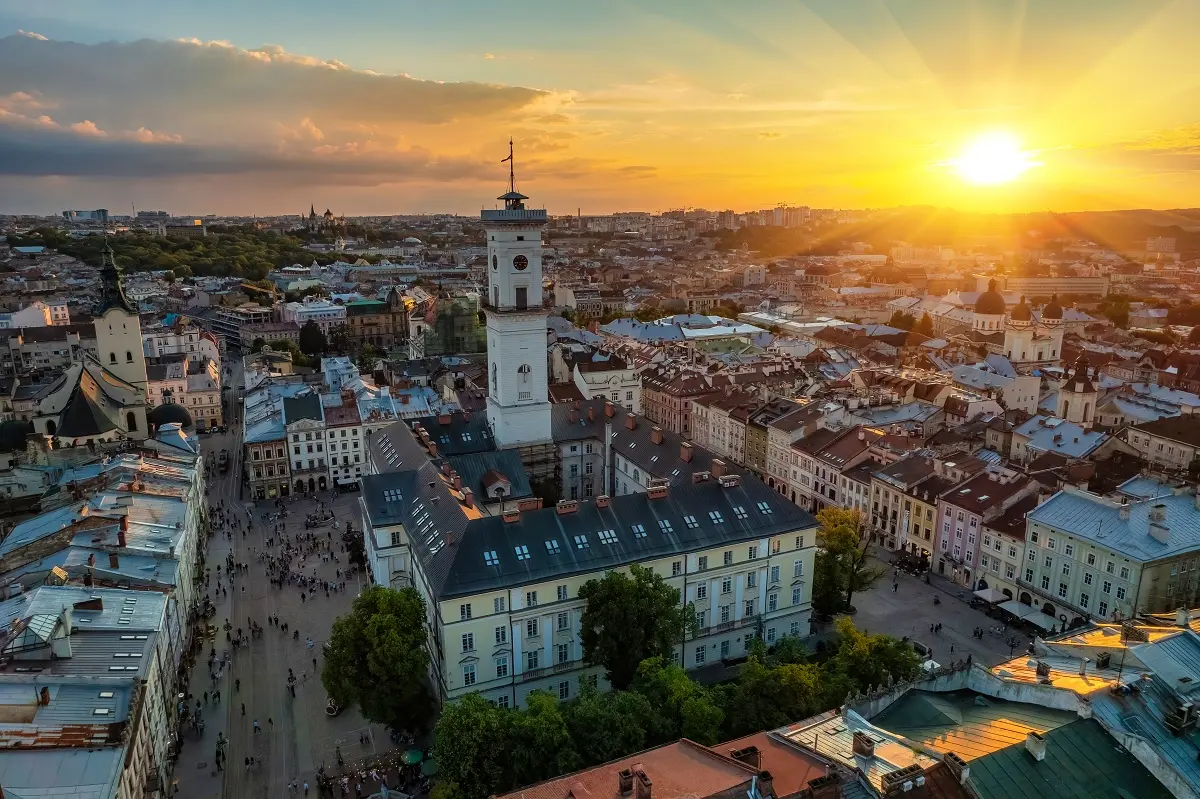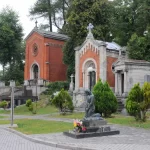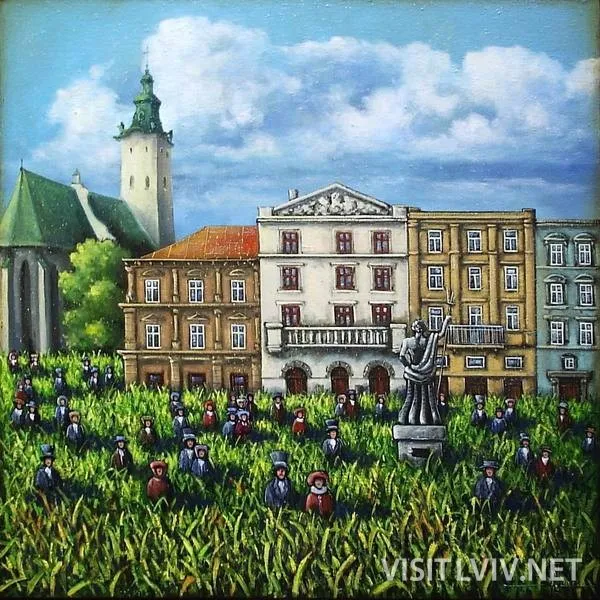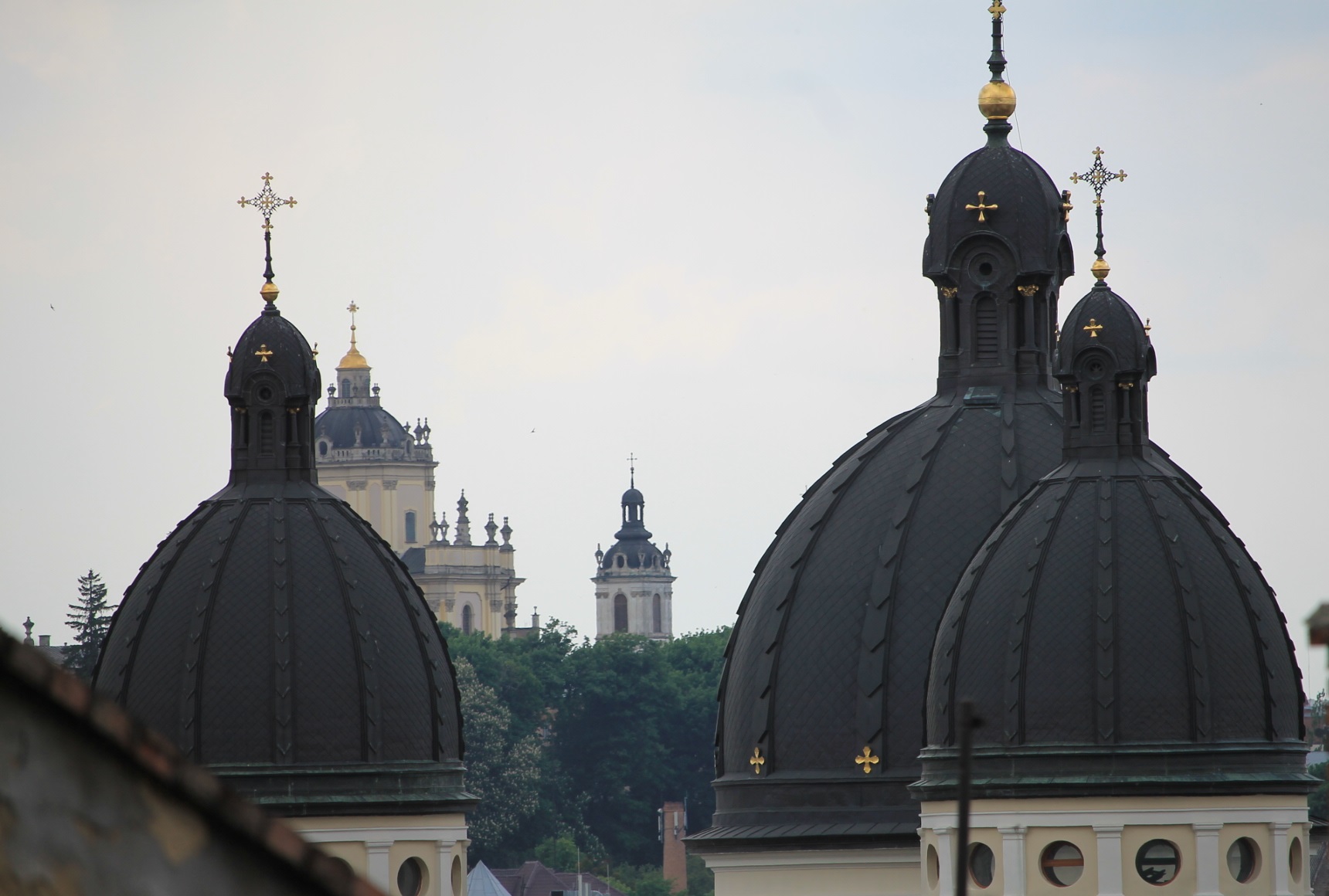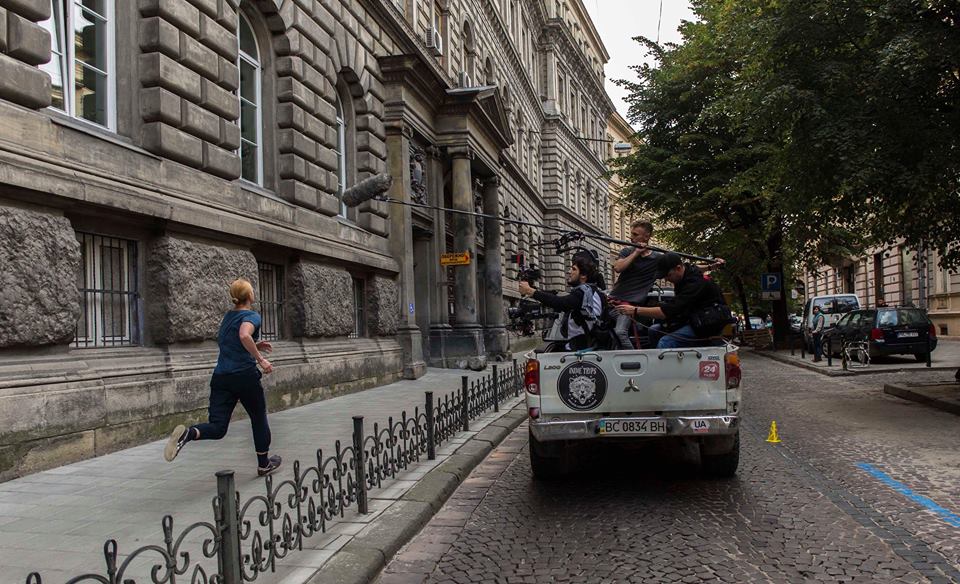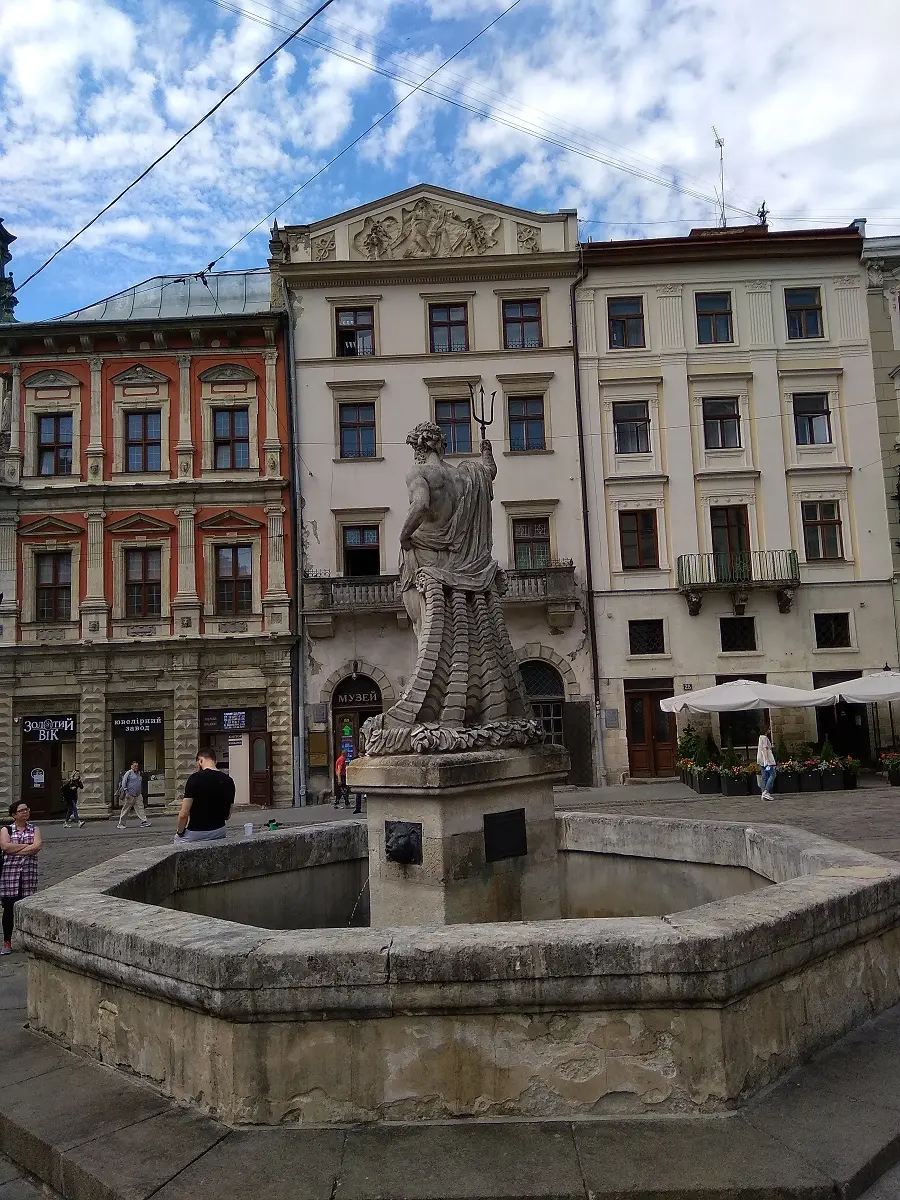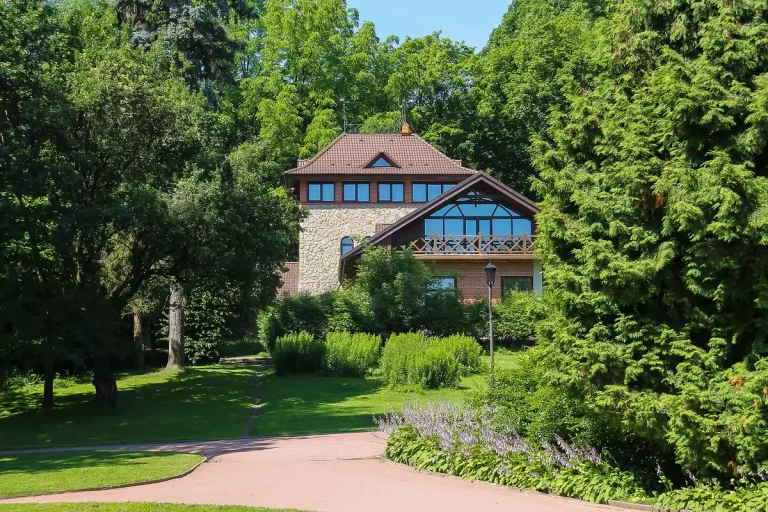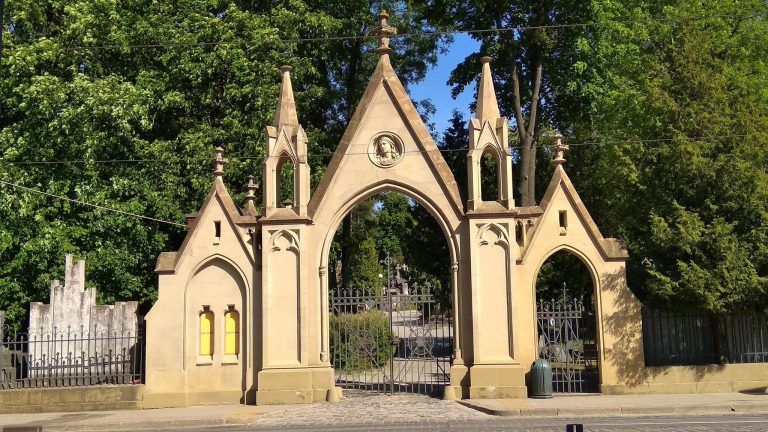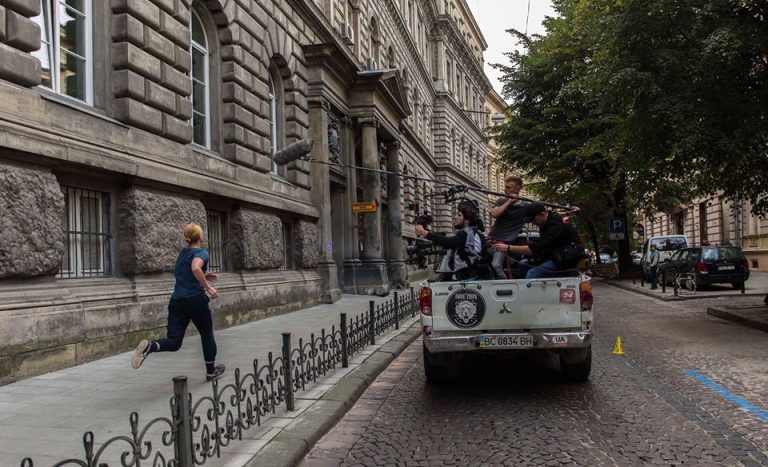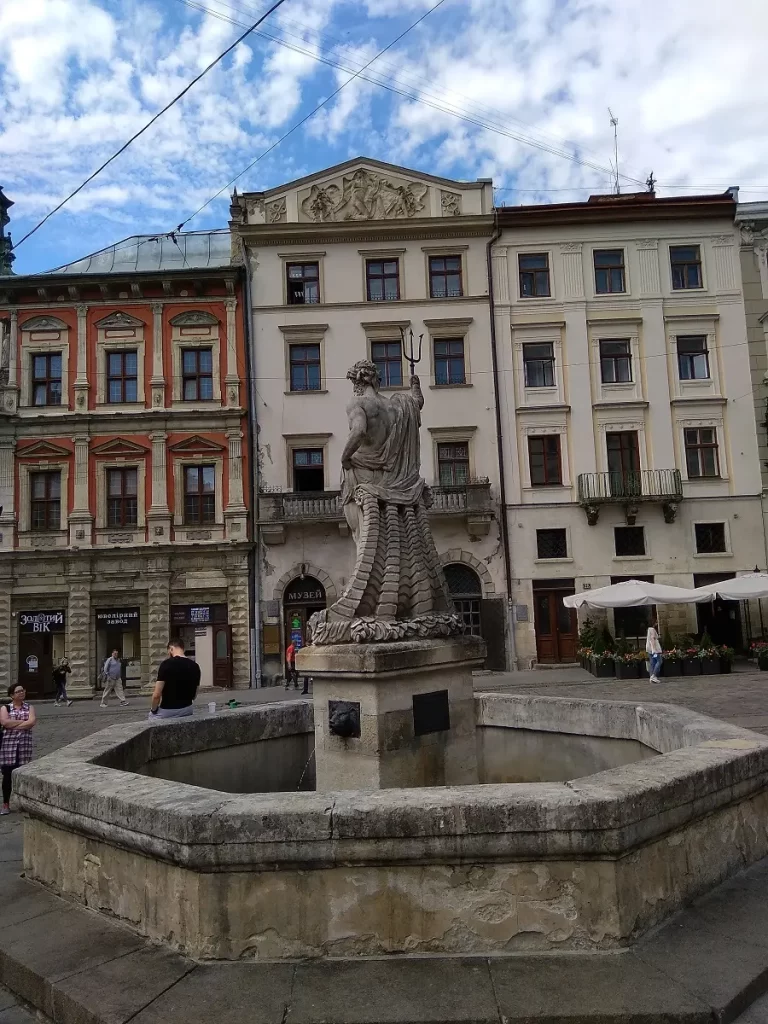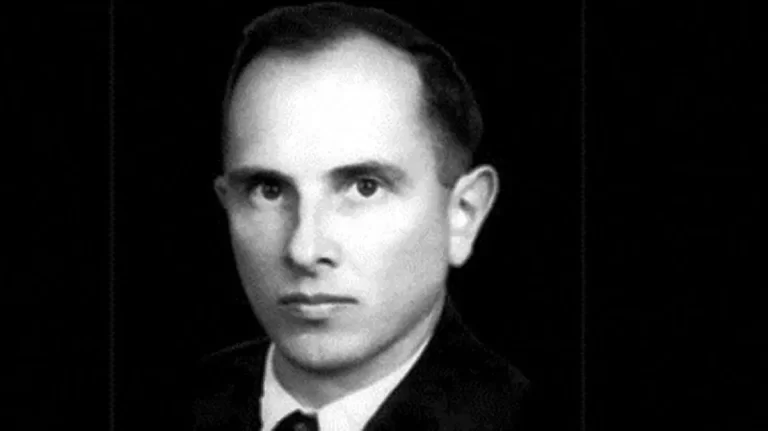Rynok Square in Lviv
The most famous and one of the oldest squares in Lviv. His heart is for five hundred years. The name of the central square is typical of cities that had Magdeburg Law (the right of urban autonomy). Magdeburgia originated in Germany, so German terminology is familiar to cities that adopted these laws. Of German origin there is also the word “market”. Originally, it sounded like “ring”, and meant “circle”. In Slavic languages, “ring” was transformed into a “market”. And since the main trade of Magdeburg cities usually took place in the Market, the word becomes synonymous with the word “bazaar”.
Buildings on Rynok Square
In the center of the market rises the town hall. The name of the building also comes from the German “Rathaus” – the council house. But in addition to the council, the court, the finance-controlling Council of Forty Men and a number of city commissions and officials sat there.
Along the perimeter of the square were the houses of the most noble burghers. They were built according to a clear rule. The width was supposed to be 9.5 meters. Consequently, there could be only three, less often four windows on the floor. Each house belonged to a separate family, and was its “face”. Therefore, neither money nor talent was spared for his jewelry. The first floor was allocated for work and business. There were workshops and shops. The rest were allocated for housing for the owner’s family, his servants and students. Every master had students. They learned from him and worked. At first glance, the houses are too small. But that’s a misleading impression. They stretched into the depths. They had a patio and an outbuilding, where cattle were often kept. And their cellars went beyond, and stretched under the sidewalks. Or even they were two floors deep.
Among the narrow houses of the Market, three exceptions were white , these are houses with six windows. They belonged to the Catholic Achiepis, the royal secretary Constantine Korniakt and the city. This is market, 6, 9 and 18. Subsequently, two more similar ones appeared, Rynok, 29 and 45. The latter was built already in the twentieth century.
Interestingly, in ancient times there were two terms for the actual house and the townhouse. The first is a wooden structure, the second is a stone-brick one. Therefore, it is the townhouse that is written on the buildings of the old city.” And those that were built already in the nineteenth century. – you can call it “house”, because in modern times that division has disappeared, as well as the wooden buildings themselves have disappeared. The city finally became only stone.
By the end of the nineteenth century. Lviv did not have a house numbering. Therefore, the buildings were named after modern or ancient owners (Hepner, Bandinelli, Vilchkivska), or in honor of some architectural feature (under a deer, under a lion).
Most of the houses of the Market were protected from the second half of the XVI century. Some, even without significant alterations, still have Renaissance jewelry. They are the most valuable. These are houses numbered 2, 4, 6, 13, 21, 23, 27, 28. Interesting are the newer townhouses of the vodka magnate Bachevsky in the Art Deco style (Rynok, 31), and the watchmaker and merchant Zipper in the modern style (Rynok, 32).
Sculptures on Rynok Square
There have long been two fountains in the Market. In addition to color, they served as suppliers of clean spring water, which was supplied from outside the city by pipes. From the end of the XVIII century. there were four fountains, one at each corner of the square. They were decorated with sculptures of the ancient gods Neptune, his wife Amphitrida, Diana and Adonis. In the mid-twentieth century, sellers from the market took water from the fountain bowls to wash or moisten their vegetables and fruits. Now one fountain, namely Neptune, has been a convenient meeting place for more than a decade.
Near the ancient town hall there was once a pillar of punishment with a sculptural image of the goddess of justice Themis and the executioner, a measure for bulk goods (each area could then have its own measures and weights, because there was no world standardization yet) and a chain for grumpy women (only quarrels at fairs were taken into account). Since the end of the XVI century, the entrance to the city hall has traditionally been guarded by a lion – a symbol and coat of arms of the city. And from the nineteenth century. there were two of them.
At the beginning of XVII century. The market was praised for perhaps the widest sidewalks in Europe. Two couples could meet them.
Entertainment in the Market
Twice a year, the Market was especially revived and filled with people from far corners of the world, because international fairs were held here. Once a Turkish traveler Chalebi asked if there was a port here, because only in port cities he still met people of so many nationalities who differed in languages and clothes.
The square also served as a venue for all city celebrations, such as elections or meetings of commanders and kings. It has repeatedly celebrated victories. Especially remembered the celebration in honor of the victory over Moscow. Then, they even created a model of the Smolensk fortress, and successfully stormed it.
Now there are no kings in the Market, but he gladly celebrates, flaunts antiquity and invigorates with coffee. Come and you.

